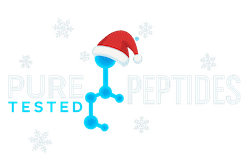Exploring the Benefits of Peptide Blends and Synergistic Mechanisms
Peptide research has expanded rapidly in recent years, with growing interest in how combinations of peptides may provide synergistic effects on cellular processes, tissue repair, and metabolic pathways. Among the most studied blends are BPC-157 with TB-500, the GLOW blend, and the KLOW blend. Additionally, combinations involving Ipamorelin and CJC-1295 have demonstrated unique mechanistic interactions. This article summarizes scientific findings and mechanisms of action, with references to PubMed-indexed studies where available.
BPC-157 and TB-500 Blend
BPC-157 (Body Protection Compound-157) is a synthetic peptide fragment derived from a naturally occurring gastric protein. It has been shown in animal studies to influence angiogenesis, nitric oxide pathways, and growth factor expression, all of which may contribute to cellular repair and regeneration (PubMed).
TB-500 (thymosin beta-4 fragment) is a peptide that modulates actin dynamics and is involved in cell migration and tissue remodeling. Research suggests TB-500 may play a role in angiogenesis and wound healing processes (PubMed).
When studied together, BPC-157 and TB-500 are often evaluated for their complementary mechanisms — BPC-157 influencing growth factor pathways and TB-500 enhancing cellular migration and angiogenesis. This combination is of growing interest for researchers exploring models of injury repair and recovery.
The GLOW Blend
The GLOW blend is a multi-peptide combination designed to address multiple biological targets simultaneously. While proprietary variations exist, blends often include peptides associated with cellular repair, collagen modulation, and anti-inflammatory pathways.
Key areas of research include:
- Enhancing fibroblast activity and collagen synthesis (PubMed)
- Modulation of oxidative stress markers
- Potential synergistic effects on angiogenesis and wound models
The GLOW blend is studied for its capacity to combine peptides with overlapping and complementary roles, amplifying potential outcomes observed in individual peptide studies.
The KLOW Blend
The KLOW blend is another research-driven peptide formulation that integrates:
- BPC-157 – known for gastric-derived protective properties and angiogenic effects
- TB-500 – actin-binding peptide fragment supporting cellular migration
- GHK-Cu – a copper peptide with evidence in tissue remodeling, skin repair, and antioxidant modulation (PubMed)
- KPV – a tripeptide fragment with reported anti-inflammatory activity in preclinical models (PubMed)
Together, these peptides may provide researchers with a model of combined action: anti-inflammatory signaling (KPV), growth factor modulation (BPC-157, TB-500), and oxidative balance (GHK-Cu). This makes KLOW a versatile candidate for multi-pathway research applications.
Synergy with Ipamorelin and CJC-1295
Ipamorelin is a selective ghrelin mimetic and growth hormone secretagogue that stimulates growth hormone (GH) release without significantly affecting cortisol or prolactin levels (PubMed).
CJC-1295 is a long-acting growth hormone releasing hormone (GHRH) analog. Research indicates it increases GH and subsequently insulin-like growth factor-1 (IGF-1), which can influence tissue repair and metabolic pathways (PubMed).
When studied in combination, Ipamorelin and CJC-1295 may exhibit synergistic effects by stimulating GH release through distinct yet complementary mechanisms: Ipamorelin acting on ghrelin receptors and CJC-1295 acting on GHRH receptors. This dual pathway activation has made the combination an area of significant research interest.
Pairing GH secretagogues like Ipamorelin and CJC-1295 with multi-target peptide blends such as BPC-157/TB-500, GLOW, or KLOW may present researchers with complex models for exploring recovery, tissue remodeling, and metabolic optimization in preclinical settings.
Conclusion
Peptide blends represent a promising area of biomedical research, particularly when considering their potential synergistic interactions. Blends like BPC-157/TB-500, GLOW, and KLOW, along with growth hormone secretagogues Ipamorelin and CJC-1295, highlight the growing trend of studying multi-pathway approaches. While more human data is needed, current evidence from animal and cellular studies provides a compelling foundation for continued exploration.
Peptide blends combine complementary research peptides into a single formulation to explore potential synergistic cell-signaling pathways in controlled laboratory settings. At Pure Tested Peptides, the GLOW Blend (BPC-157, TB-500, GHK-Cu) is designed for research into extracellular matrix dynamics and copper-peptide interactions, while the KLOW Blend (BPC-157, TB-500, KPV, GHK-Cu) allows investigators to study inflammatory signaling and tissue remodeling mechanisms across models. These blends streamline experimental design by providing standardized combinations for consistent, repeatable inquiry. For laboratory research only; not for human use.
Disclaimer: This article is for informational and research purposes only. No medical advice, treatment recommendations, or dosage guidelines are provided.
